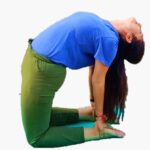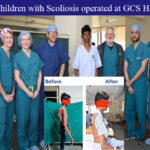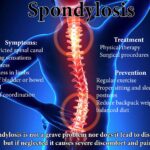Spine health provides stability and flexibility to the body. It is essential to maintain regular exercises, proper posture, training of supportive muscles and avoiding damage to those sensitive supporting structures to maintain good spine health.


spine have undergone modifications:
Ever since humans began to walk on their legs the dynamics of the spine have undergone several suitable modifications. In animals the spine is horizontal. With evolution walking on two legs gradually evolved for the select purposes in chimps to total bipedal in humans. In the process of transformation spine had to undergo several structural and functional modifications. From horizontal position some animals evolved to walk with a bent knee and hip to stand up. To accommodate the erect posture in humans knee and hip became straight.
As a compensation the spine got modified with suitable curves . Human spine extends from the neck all the way to the bottom . Though it is in straight line , there are many curves from front to back . The spine can be grossly divided into cervical ( neck area) , thoracic( chest area) , lumbar( abdominal) and sacral and coccyx( bottom area) . The hither too tail of the animals gradually regressed as a small remnant seen as Coccyx( tail bone). In the neck the first two bones got modified to support the head called Atlas and Axis.
The bones of the spine are called vertebrae, which has a thick part called body in the front, pedicles in the middle that has supporting joints and a ring to host the spinal cord called Lamina and the final projecting part backwards is the spinous process. Each part has a distinct function . The body is strong that gives stability to stand, pedicles have the joints that holds all the bones in alignment and the joints provide the mobility, the bony ring protects spinal cord, and finally the spinous process holds the spinal muscles on the back.
Strong muscles facilitates mobility and stability.
The intervening discs and the surrounding strong muscles facilitates mobility as well as stability. The ligaments in front, back , around the spinal joints decides the range of movements at each level. These movements vary from part to part having maximum movement at the neck followed by the lumbar region. There are 7 cervical, 12 thoracic , 5 lumbar , 5 sacral and 5 coccygeal bones. The sacral and coccygeal ones are united together as a single piece that supports the pelvic structures.
In reality disc between the two vertebral bodies acts like a washer and shock absorber facilitating the movements. All these structures are prone to wear and tear causing degeneration over the time which in turn disturbs the nerve function. When the disc becomes dry it can crack and the inner jelly like structure will come out pressing the nerves causing severe pain. So it is essential to maintain the integrity of all these structures by regular exercises, proper posture, training of supportive muscles and avoiding damage to those sensitive structures.
Though there are lot of checks and balances to prevent damage ,inadvertently one can injure any of them leading to either temporary or permanent damage causing pain and difficulty in movement. The spinal nerves exit at different levels to supply various parts of the body (motor nerves), while the counterparts provide feedback (sensory nerves) to the brain respectively. In addition fibres from the autonomic nervous system (sympathetic and parasympathetic) that control lungs, heart, blood vessels, gut, bladder and sexual organs are also located within. Thus spinal cord is essentially a large cable containing millions of delicate fibbers that provides bidirectional connections between the brain and individual parts of the body .
The blood supply to this entire cable is very critical as its ability to endure insults of any kind is poor even comparison to brain. Hence handling these nerves during surgery is a challenge—it is an art. Spinal surgery demands highly specialized training, technology and devices. General perception is that the spinal surgery is dangerous. But the right surgery in the right time will not only prevent damage to the nerves but also help recovering. Therefore one need not shun away from spine surgery if needed. Today we have MRI scan that can show all the problems related to any of the above mentioned structures.
BRAINS ( Neuro Spine ) hospital has an exclusive centre for the spine. Apart from CT ,and MRI scans, for diagnosis, the operating Microscope, Navigation, Intra operative 3 D imaging of spine, intra operative monitoring system, sensory and motor evoked potentials, spinal angiography, endoscopic and minimal invasive spine surgeries and rehabilitation makes the spinal surgery safe and effective under trained Neuro Spine surgeons.
Spine can pose innumerable problems
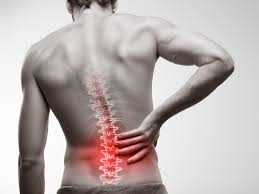

Therefore maintaining the spine health is very important to sustain the functional abilities of the individual. Loss of spine function in any form can disable an individual in many ways therefore the aphorism” SPINE LESS”. Spine health demands proper posture , regular exercises , proper diet , calcium supplementation, proper support during sleep. One must avoid smoking, obesity and improper use of the spine.
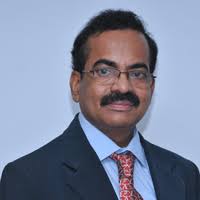

Dr N K Venkataramana
Founder Chairman & Chief Neurosurgeon
Brains Hospital, Bangalore.




